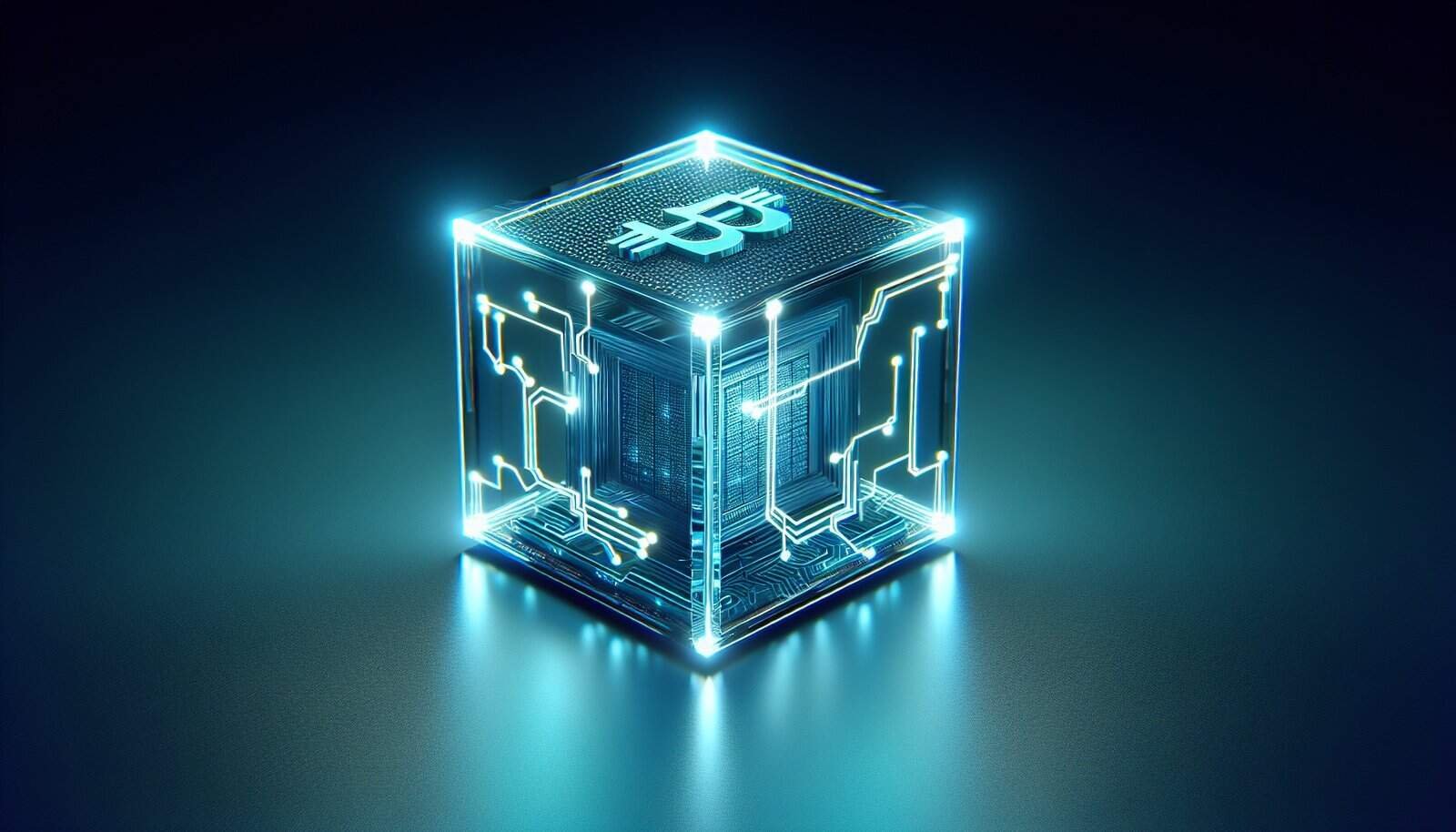Which exchanges let you access DeFi directly from their platform in 2025?
Which Crypto Exchanges Are DeFi-integrated In 2025?
You’re asking a timely question: as DeFi grows more mainstream, which crypto exchanges let you tap into on-chain protocols, yield products, and cross‑chain liquidity without leaving the exchange experience? This article answers that by explaining what “DeFi-integrated” means, listing the major players in 2025, comparing features, and giving practical guidance for using these services safely.
What “DeFi-integrated” usually means
When an exchange is described as DeFi-integrated, it typically means the platform enables you to access decentralized finance primitives (swaps, lending, liquidity provision, staking, bridges, and smart‑contract interactions) either natively in its UI or through a noncustodial wallet it supports. You’ll see a range of integration models: full noncustodial access, hybrid custody with on‑chain routing, and simple contract-enabled withdrawals.
DeFi integration can be as light as letting you withdraw to a smart contract address or as deep as embedding a DEX aggregator, lending markets, and cross‑chain bridges inside the exchange UI so you can use them without switching interfaces.

Why this matters for you
Knowing which exchanges are DeFi-integrated helps you decide where to keep funds, how to access higher yields, and what tradeoffs you accept between convenience and custody. You’ll need to weigh security, fees, regulatory controls, and composability (how easily your assets can move between protocols).
Categories of DeFi integration
There are several patterns you’ll encounter. Each pattern changes how you interact with risk and custody.
Noncustodial wallets integrated into exchanges
Some platforms offer built-in or companion noncustodial wallets that let you interact with DeFi without keeping control of your keys on the exchange. This model gives you on‑chain freedom and the exchange’s UX convenience.
Embedded on‑chain services and aggregators
Exchanges often embed swap aggregators, lending market access, and liquidity pools so you can perform on‑chain actions directly from the exchange UI. In this model, the exchange might route transactions through smart contracts but still custody your assets unless you opt out.
Custodial + smart contract routing
Some centralized exchanges (CEXs) custody your assets but use smart contract counterparts to achieve DeFi-like yields (e.g., they lend to Aave and share returns). You get simplified UX but less direct control and different counterparty risk.
Layer‑2 and hybrid custodial solutions
L2 integrations let you move faster and pay lower fees. Some exchanges run or partner with L2s that handle account abstraction or gasless transactions, improving the DeFi experience while keeping custody optional.

Major centralized exchanges with DeFi features in 2025
Below are the largest exchanges that, by 2025, provide accessible DeFi features. You’ll find a mix of fully on‑chain, hybrid, and custodial approaches. This list focuses on exchanges that actively integrated DeFi primitives into their product suites and UIs.
| Exchange | DeFi features you can expect | Custody model | Notes on 2025 status |
|---|---|---|---|
| Binance | Built-in swaps, Binance Smart Chain/Binance Chain integration, liquidity pools, staking, DeFi Earn, DEX connected wallet | Custodial by default; Binance Wallet for noncustodial | Continues to connect CEX and BSC DeFi services and offers in‑platform routing |
| Coinbase | Wallet + app integrations, staking, limited on‑chain swaps, DApp browser, bridge connectors | Custodial by default; Coinbase Wallet for noncustodial | Increased support for L2s and on‑chain DEX access inside Wallet app |
| Kraken | Staking, on‑platform liquid staking options, limited DeFi integrations via partnerships | Custodial with partner noncustodial options | Focus on regulatory compliance and staking |
| OKX | Built-in wallet, DEX aggregation, staking, multi‑chain bridging, L2 support | Custodial + OKX Wallet noncustodial | Emphasizes Web3 wallet and in‑app DeFi tools |
| KuCoin | Earn products, staking, in‑app swaps and DEX links, NFT/DeFi hub | Custodial plus noncustodial wallet options | Known for listing many tokens and DeFi connectors |
| Crypto.com | DeFi Wallet app, swaps, staking, DeFi Earn | Custodial for exchange; Crypto.com DeFi Wallet noncustodial | Focused on consumer apps and DeFi wallet features |
| Bybit | DEX aggregator, wallet, staking and liquidity tools, bridging | Custodial + noncustodial wallet | Strongly moved toward hybrid DeFi services and L2 connections |
| Gate.io | Farming, staking, liquidity pools, bridge connectors | Custodial | Extensive yield product marketplace |
| Bitget | Copy trading plus DeFi tools, wallet integration | Custodial + wallet | Added DeFi features to serve traders wanting Web3 access |
| Binance.US / Regional CEXs | More limited DeFi features, wallet and staking where allowed | Custodial + wallet | Regulatory constraints reduce integrated DeFi in some regions |
You’ll notice three themes: (1) large CEXs offer companion wallets to give you on‑chain control; (2) many exchanges embed aggregator and staking services; (3) features may differ by jurisdiction due to regulations.
Major decentralized exchanges and aggregators that act like “exchanges”
If you want pure DeFi, decentralized exchanges (DEXs) are the original DeFi exchanges. They are fully on‑chain, permissionless, and composable. In 2025, many DEXs are even easier to use and are sometimes integrated into centralized exchange UIs.
| DEX / Aggregator | Primary function | Chains / Layers supported |
|---|---|---|
| Uniswap | AMM token swaps, liquidity pools, concentrated liquidity | Ethereum mainnet, many L2s |
| SushiSwap | AMM, lending (Kashi), on‑chain services | Multi‑chain |
| Curve | Stablecoin and low‑slippage swaps | Multi‑chain, L2s |
| 1inch | Aggregator routing the best price | Multi‑chain |
| Balancer | Multi‑asset pools, customizable AMM | Multi‑chain |
| dYdX | Orderbook-style DEX for derivatives (now on Cosmos/own chain) | L2 or sovereign chain |
| PancakeSwap | AMM on BNB Chain | BNB Chain and cross-chain bridges |
| Uniswap v4 / advanced AMMs | More efficient routing, hooks for extensibility | L2s, EVM-compatible chains |
If you prefer interacting directly with on‑chain protocols, these DEXs provide the tightest composability and the fewest custodial tradeoffs. You’ll need a noncustodial wallet to interact directly.

Layer‑2s, rollups, and hybrid exchange models you should know
DeFi usability has heavily depended on transaction cost and speed. By 2025, many exchanges and wallets push you onto L2s or integrate account abstraction to improve UX.
- Arbitrum and Optimism: Many DEXs and aggregators run on these optimistic rollups. You’ll get lower fees and many tokens routed natively.
- zkSync, StarkNet, Scroll: ZK rollups focusing on privacy, speed, and scalability. Some exchanges offer one‑click bridging to zk L2s for cheaper DeFi use.
- Loopring, ImmutableX: Orderbook or AMM-style exchanges on L2s that optimize costs for swaps and NFTs.
- Sovereign chains (dYdX): Certain decentralized exchanges use their own chain architectures for advanced features like perpetuals with low fees.
You should check which L2 an exchange supports, as support determines fee savings and what DApps you can access.
How exchanges integrate DeFi in practice: common features
Knowing the specific features helps you match an exchange to your needs. Here are the most common ways exchanges integrate DeFi:
Swaps and DEX aggregation
You can swap tokens using aggregated routes that split transactions across multiple pools for the best price. Aggregators reduce slippage and improve price execution compared with single‑DEX routing.
On‑platform staking and liquid staking
Many exchanges let you stake assets and receive liquid staking tokens (LSTs) or exchange-managed staking yields. Liquid staking gives you usable tokens that represent your staked position so you can use them in DeFi while earning yield.
Yield farming and pool provision
Platforms let you add liquidity to pools to earn fees and incentives. Some exchanges offer “auto‑compounding” vaults that reinvest earnings for you.
Lending and borrowing
You’ll find integrations to on‑chain lending markets (Aave, Compound) or exchange-native lending where the exchange routes deposits to DeFi lenders and passes returns to you.
Bridges and cross‑chain swaps
Cross‑chain bridges let you move assets between chains and L2s. Exchanges often integrate bridges and present one‑click flows, but bridging still carries smart contract and counterparty risk.
Wallets and account abstraction
Integrated wallets make DeFi accessible. Account abstraction can let you pay gas in tokens, recover accounts via social recovery, or use meta‑transactions that improve UX for newcomers.
Tokenized assets and derivatives
Some platforms tokenise yield-bearing positions, index baskets, or derivatives that replicate DeFi strategies, letting you obtain exposure without active on‑chain management.

Comparing custody tradeoffs: who controls the keys?
You’ll need to understand custody because it changes your risk profile.
- Noncustodial (you control keys): You have full on‑chain control and composability. You bear private key risk and smart contract risk.
- Custodial with DeFi routing: Exchange holds keys but uses DeFi protocols to generate yield. You get easier UX but rely on the exchange’s solvency and honesty.
- Hybrid: You can choose between custodial and wallet modes. This gives you choice but requires you to know when to switch.
Always confirm whether a feature requires withdrawal to an on‑chain address, whether the exchange holds custody while using DeFi, and whether insured protection applies.
Security and risks when using DeFi-integrated exchanges
You must manage multiple risk vectors when you use DeFi-integrated exchanges.
Smart contract risk
Smart contracts can have bugs. Even audited contracts have had exploits. You should understand that interacting with DeFi on‑chain inherently carries smart contract risk.
Custodial counterparty risk
If the exchange retains custody, you’re exposed to exchange solvency, mismanagement, or regulatory action. Don’t keep more on an exchange than you’re willing to lose.
Bridge risks
Cross‑chain bridges are frequent attack targets. When you bridge assets, accept that code complexity and trust assumptions increase risk.
Phishing and wallet‑approval attacks
When you approve token allowances, malicious sites can drain funds. Use approval limits, revoke allowances regularly, and interact only with trusted sites.
Regulatory and legal risk
Regulation changes can affect your ability to use certain DeFi services on an exchange. Regionally restricted features may be disabled based on your location.
MEV and front‑running
On some chains, Miner/Maximal Extractable Value (MEV) can affect trade execution. Some services offer MEV protection, but it may come at higher fees.

How to evaluate a DeFi-integrated exchange
When you choose an exchange, ask these questions:
- Is custody custodial or noncustodial for the DeFi feature you want to use?
- Which chains and L2s are supported?
- Does the platform route to audited protocols or use proprietary smart contracts?
- What are the fees for swaps, bridge operations, and withdrawals?
- Is the feature available in your jurisdiction?
- What insurance or user protections exist?
- How easy is it to withdraw to an external wallet and continue on‑chain?
Write down answers and prioritize what matters most to you (e.g., control vs convenience).
Practical steps to start using DeFi through an exchange
If you’re ready to try DeFi features, follow these steps to minimize mistakes.
- Use small amounts first. Test flows with low value to confirm execution and fees.
- Connect or create a noncustodial wallet if available (MetaMask, Coinbase Wallet, OKX/Exchange Wallet). Safely store your seed phrase offline.
- Check chain selection. Move to a supported L2 if you want lower fees.
- Approve minimal allowances before using a protocol. Consider using wallet “approval for one transaction” options.
- Monitor transactions in the block explorer. Confirm on‑chain contracts match the protocol addresses published by the exchange.
- Revoke unnecessary approvals using a trusted revocation tool.
- Track yields and tax implications. DeFi transactions create many taxable events.
Fees, UX, and performance considerations
You’ll notice differences in fees and speed between exchange-native services and on‑chain DeFi.
- On‑chain swaps on Ethereum mainnet can be costly during congestion. L2 or alternative chains reduce fees.
- CEX-built services may have lower explicit fees but reserve the right to spread or allocate yields differently.
- UX matters: if you’re new to DeFi, a well-designed wallet or exchange integration reduces error risk.
Always compare the all‑in cost (trading fee + gas + bridge fee + slippage) when executing an operation.
Regulatory considerations and geographic restrictions
Regulations shape what is available to you. In some countries, exchanges must restrict DeFi products or halt withdrawals to certain contract addresses. If you live in a restricted jurisdiction, you may have limited access to DeFi integrations or have to use noncustodial wallets instead.
Exchanges also implement KYC and AML. DeFi by nature is permissionless, but exchanges often require identity verification to use fiat on/off ramps, staking, or high‑value services.
Notable 2025 trends shaping the DeFi‑exchange landscape
These trends affect which exchanges emphasize DeFi and how they do it.
- Greater CEX–DeFi interoperability: Exchanges increasingly offer companion wallets and on‑ramp routes to L2s and DEXs.
- Account abstraction: Simpler onboarding and gas payment options improve usability for newcomers.
- Liquid staking mainstreaming: LSTs are widely available, letting you use staked assets in DeFi strategies.
- Cross‑chain composability: Bridges and messaging protocols improve cross‑chain DeFi, though risk remains.
- Institutional DeFi access: Some exchanges offer regulated, custodial access to DeFi yields for institutional clients.
- Enhanced auditing and security tooling: Formal verification, runtime checks, and insurance products become more common.
These shifts mean that by 2025, you’ll find a richer spectrum of products that blur the line between centralized and decentralized finance.
Case studies: realistic user flows
Using a companion wallet to supply liquidity
You connect your exchange’s noncustodial wallet, bridge funds to an L2, and add liquidity to a pool in the DEX integrated inside the wallet. You receive LP tokens, which you can stake in a rewards vault. You remain in control of private keys and can withdraw at any time.
Using exchange-native liquid staking
You stake ETH through the exchange’s liquid staking product. The exchange deposits ETH into a staking protocol and issues a tokenized receipt (LST). You use that token inside the exchange’s yield marketplace to earn additional returns. Custody remains with the exchange unless you withdraw the LST to an external wallet.
Bridging and swapping across chains
You use the exchange UI to bridge from Ethereum mainnet to an L2, then perform a swap via a DEX aggregator embedded in the exchange app to minimize slippage and fees. The exchange routes transactions on your behalf and displays the optimal route.
These examples illustrate choices: custody vs noncustodial and convenience vs full on‑chain control.
Checklist: safe practices when using DeFi-integrated exchanges
- Start with small amounts for new features.
- Use noncustodial wallets for maximum control.
- Enable hardware wallets when supported.
- Check contract addresses and audit reports.
- Limit token approvals and revoke unused allowances.
- Keep funds diversified and don’t overexpose to single smart contracts.
- Keep software up to date and use phishing protection.
- Understand tax rules in your jurisdiction.
Frequently asked questions
Can I use DeFi without giving up custody?
Yes. If the exchange provides a noncustodial wallet or you connect an external wallet (MetaMask, Ledger), you can interact with DeFi while keeping your keys. However, if you use exchange-native custodial products, custody usually remains with the exchange.
Are the yields on CEX DeFi products the same as on‑chain?
Not always. Custodial products may charge management or performance fees, and they may route funds differently than you would on‑chain. Compare net yields and understand fee structures.
Are bridges safe to use?
Bridges reduce friction but carry contract and economic risk. Use well‑audited bridges with strong liquidity and consider bridging smaller amounts.
If I stake through an exchange, can I withdraw to my wallet?
Often yes, but not always. Some staking products lock assets or use pooled custody that requires on‑exchange redemption. Read the specific product terms.
Final thoughts: balancing convenience and control
You’ll find in 2025 that many exchanges have made DeFi more accessible. If you value convenience, exchange-native or hybrid custody products will suit you. If you prioritize control and composability, using noncustodial wallets and interacting with DEXs and protocols directly is better.
Whatever path you choose, be deliberate about custody decisions, test with small sums, and treat DeFi like any high‑risk, high‑reward financial area that requires ongoing attention.
Resources to keep learning
- Official documentation and audits for the exchange and each DeFi protocol.
- Chain explorers (Etherscan, Arbiscan, etc.) to verify transactions.
- Revoke and allowance tools to manage token approvals.
- Security reports and community research channels.
You now have a framework to assess which exchanges are DeFi-integrated in 2025, their typical features, and how to use them safely. If you want, I can compare two specific exchanges side‑by‑side for the DeFi features that matter most to you. Which ones are you considering?
